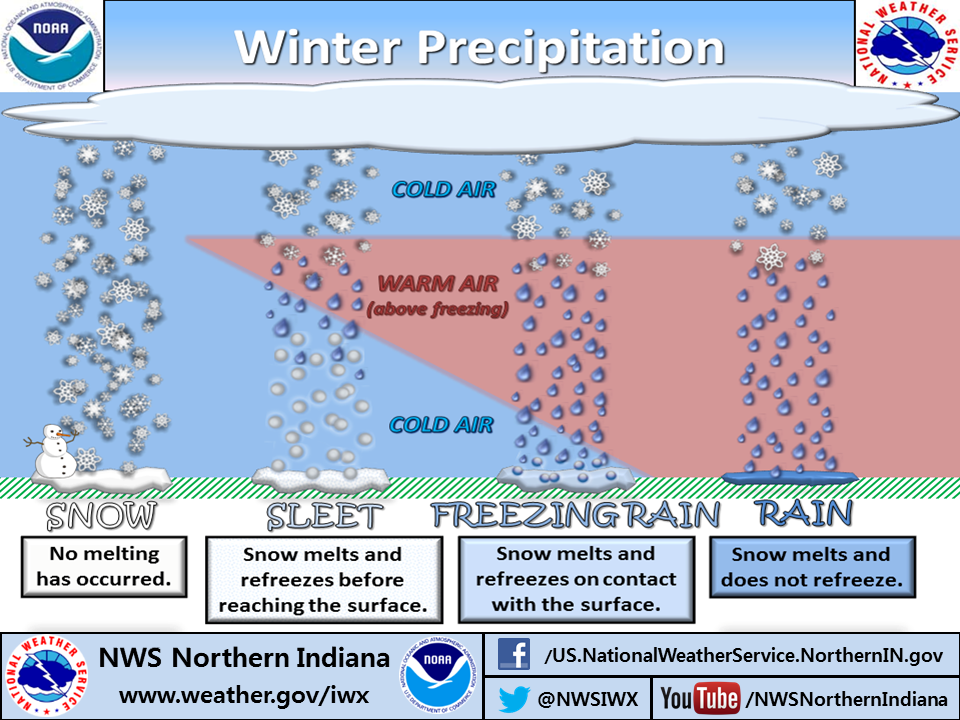During the winter months, arctic fronts bring all types of wintry weather to portions of the United States, from snow in the Great Lakes to rain along the gulf coast.
There are types of moisture between rain and snow that can be seen depending on conditions, and this guide is to help you determine what you're seeing.
In this guide, "warm air" is defined as air above freezing (32°F or 0°C) and "cold air" for air below freezing.
Snow:
- Snow is when ice crystals start in cold air and do not melt as they fall to the surface.
Sleet/ice pellets:
- Sleet is sometimes confused for small hail stones in that they both look similar and make similar sounds when impacting a surface, but the formation of sleet does not involve a thunderstorm. Sleet starts as snow when it first precipitates, but enters a pocket of warm air and partially melts into a raindrop. The partially-melted raindrop reenters the cold air and refreezes into an ice pellet before reaching the surface.
- The ice pellets can accumulate similar to snow, and are usually translucent. Ice pellets are usually small, typically less than 5mm (0.2") in diameter.
Freezing rain:
- This looks like ordinary rain as it's falling from the sky, but it creates problems when it makes contact with something on the surface.
- Freezing rain, like sleet, starts as an ice crystal and enters a pocket of warm air. The ice crystal completely melts into a raindrop before reentering the cold air. The drop is now considered "supercooled" since it is below the freezing point yet still a liquid. Once the supercooled drop makes contact with a surface (tree branch, street, car) that below the freezing point, the drop freezes. Those drops will eventually build a coating or glaze of ice on the surface. During freezing rain events, a given surface may look wet, but in reality that glaze of ice is there. The best
- If the ground temperatures is above freezing, then the ground heat may prevent freezing.
Rain:
- Rain is an ice crystal that enters a warm pocket of air and does not refreeze before coming in contact with the surface.


